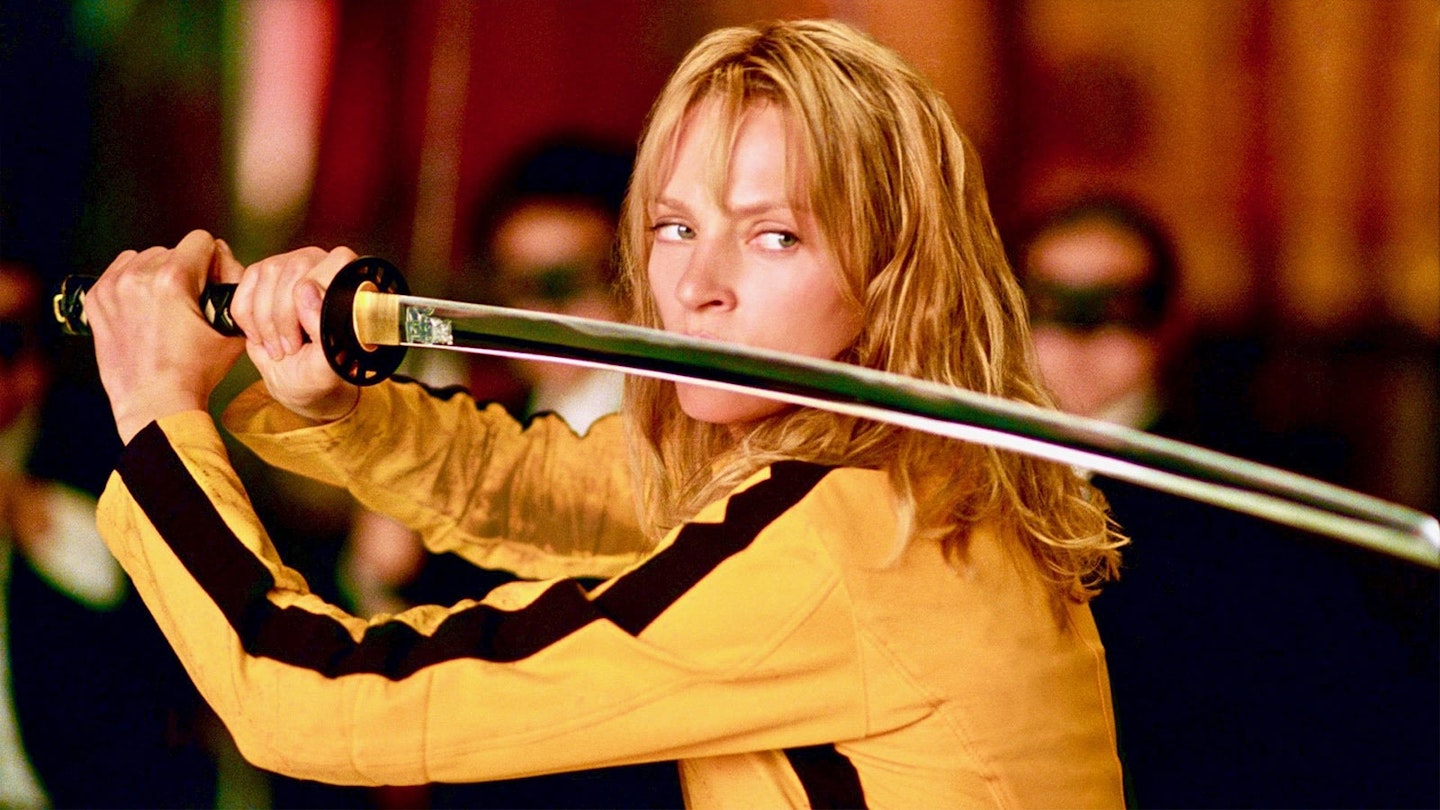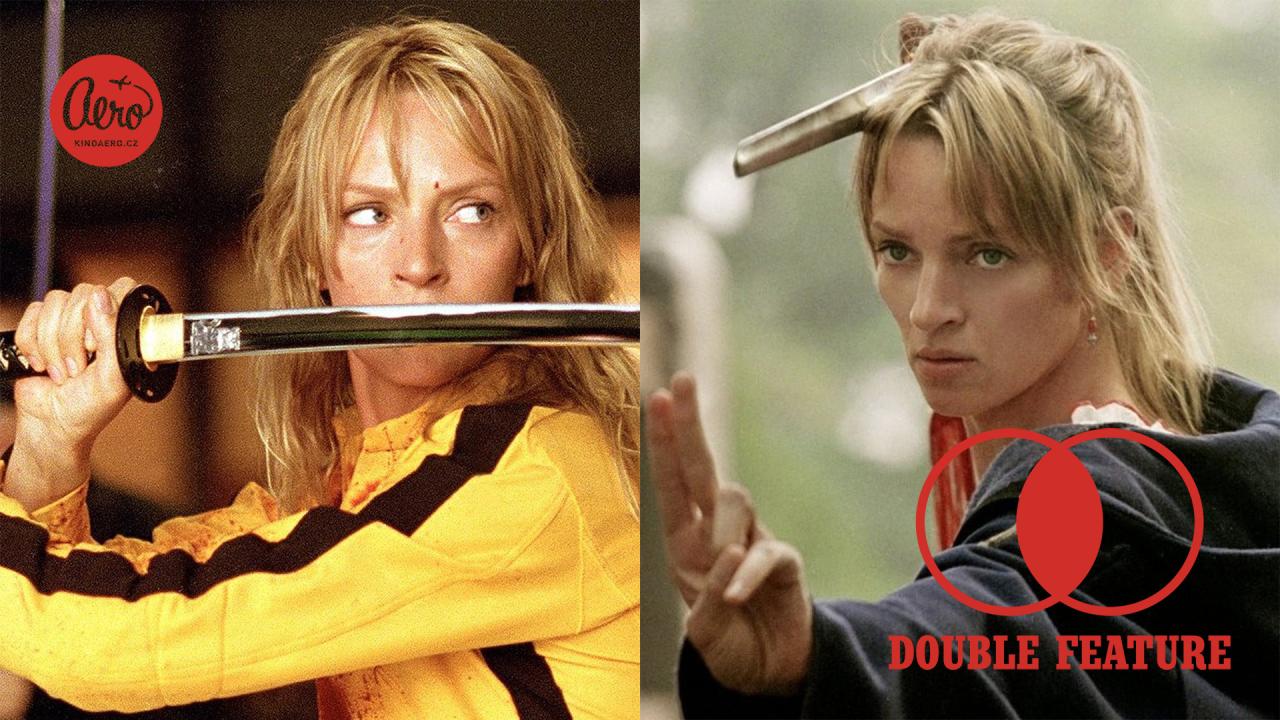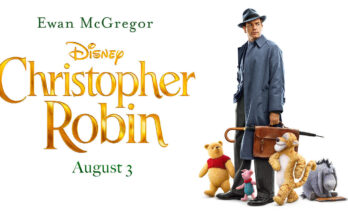Kill Bill is a two-part martial arts revenge film written and directed by Quentin Tarantino. The films are known for their stylized action, homages to genre cinema, and nonlinear storytelling. Here’s a description of both parts:
The first film opens with a dramatic and violent sequence showing “The Bride” (Uma Thurman), a former assassin, who is brutally attacked on her wedding day by her colleagues from the Deadly Viper Assassination Squad (DVAS). She is shot in the head and left for dead by her leader, Bill (David Carradine), whom she once loved. The film follows The Bride as she survives the attack and embarks on a mission of revenge against the five members of the DVAS who betrayed her.

The first part of Kill Bill is highly stylized and features several iconic action sequences, including a bloody fight with the “Crazy 88,” a Japanese gang led by O-Ren Ishii (Lucy Liu). The Bride’s quest to take down her former comrades—Vernita Green (Vivica A. Fox), O-Ren Ishii, Elle Driver (Daryl Hannah), Budd (Michael Madsen), and Bill—is central to the plot. The action is exaggerated and over-the-top, with a mix of martial arts, sword fighting, and surreal moments.

Kill Bill: Volume 1 is known for its visual flair, blending influences from kung fu, samurai films, spaghetti westerns, and anime. The film ends on a cliffhanger, with The Bride’s final showdown with O-Ren Ishii and a powerful vengeance-filled declaration of intent.
The second film picks up immediately after the events of the first, focusing on The Bride’s journey toward her ultimate confrontation with Bill. Kill Bill: Volume 2 takes a more methodical and dramatic approach, slowing down the pace and delving into The Bride’s past and her relationship with Bill. Through flashbacks, we learn more about her life as an assassin, the DVAS, and her betrayal by Bill, which sets everything in motion.
Volume 2 is more dialogue-heavy than the first, with some significant character development, especially with Bill (David Carradine), who is revealed to have been more than just the antagonist—he is also the father of The Bride’s child. The film explores themes of love, betrayal, and redemption, culminating in a final confrontation between The Bride and Bill, which is a mix of physical action and emotional resolution.
In this installment, The Bride defeats the remaining members of the Deadly Viper Assassination Squad, including Elle Driver, in an epic final showdown. Ultimately, Kill Bill: Volume 2 concludes with a bittersweet ending as The Bride avenges the wrongs done to her but also learns the truth about her daughter and her relationship with Bill.
Style and Impact
Kill Bill is a love letter to genre films, combining martial arts, samurai traditions, spaghetti westerns, and exploitation cinema. Tarantino’s signature nonlinear narrative, sharp dialogue, and use of music enhance the intensity and emotional weight of the story. The film is also famous for its distinctive visual style, including the vibrant colors, highly choreographed fight scenes, and unique use of black-and-white or anime sequences.
Kill Bill has become a cult classic, praised for its action sequences, iconic characters, and influence on modern cinema. Uma Thurman’s portrayal of The Bride is particularly celebrated for its strength, vulnerability, and complexity. The film’s themes of revenge, empowerment, and redemption resonate with audiences and solidified Kill Bill as one of Tarantino’s signature works.




